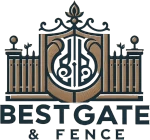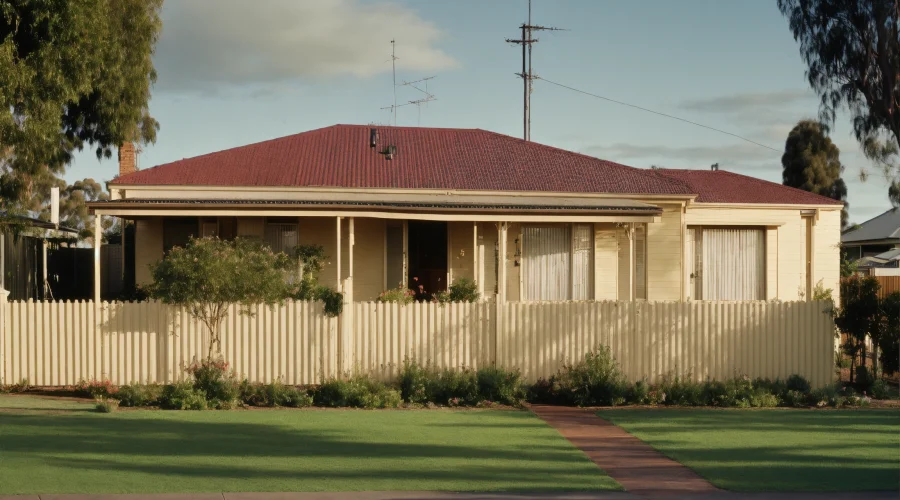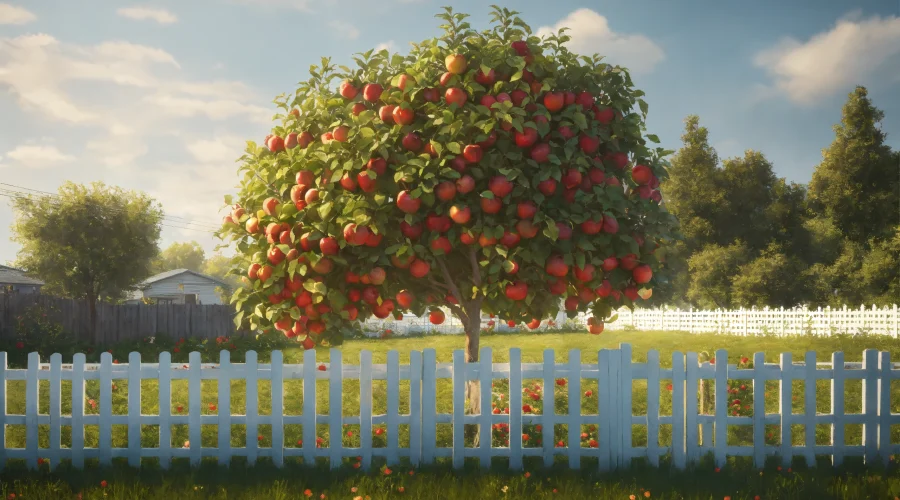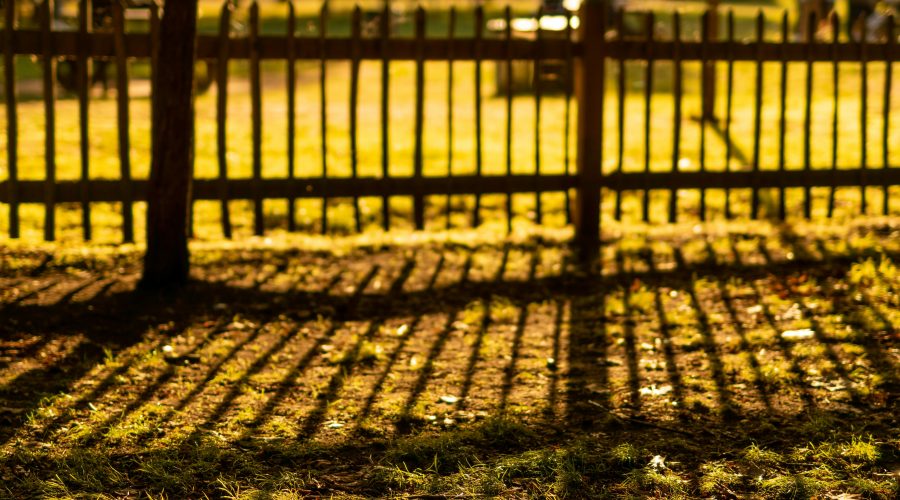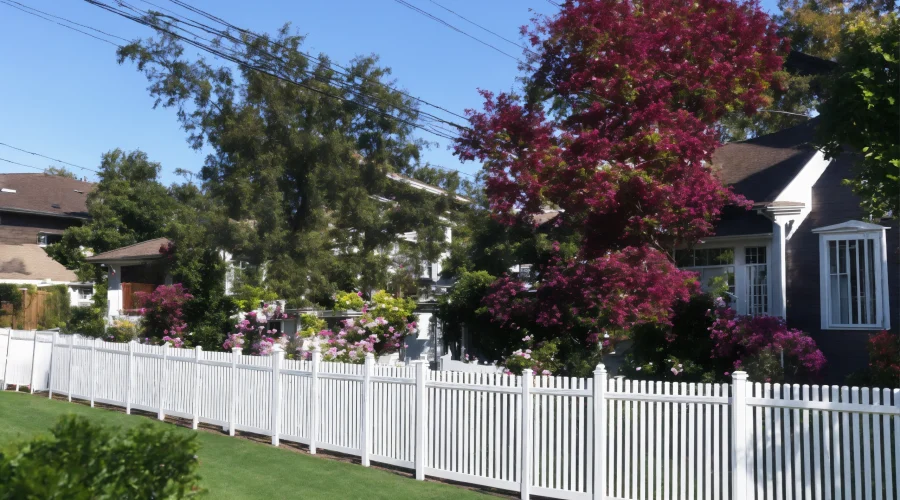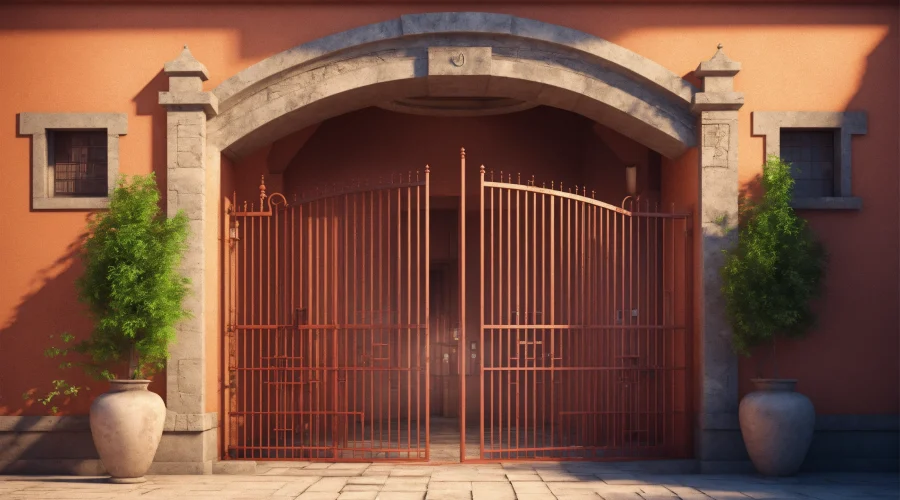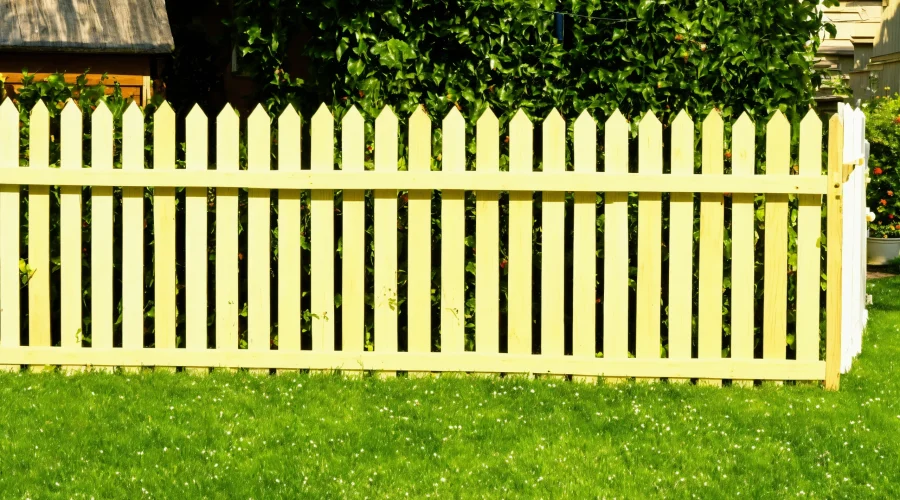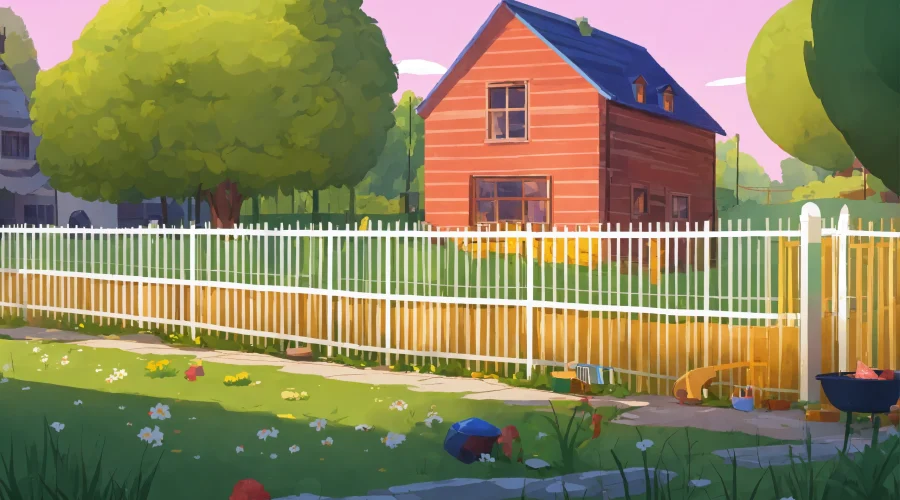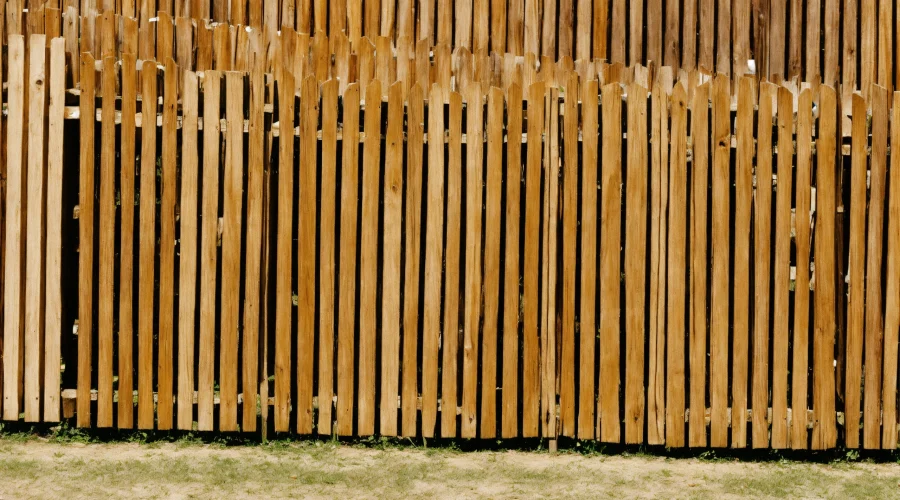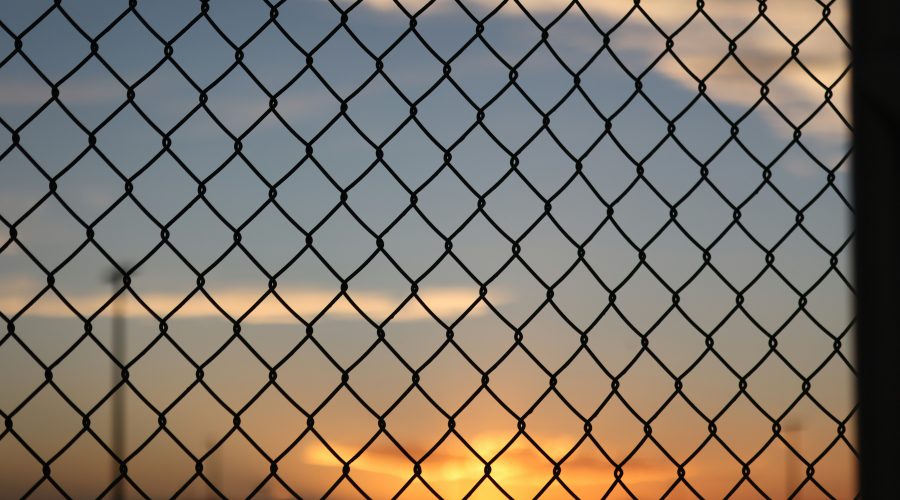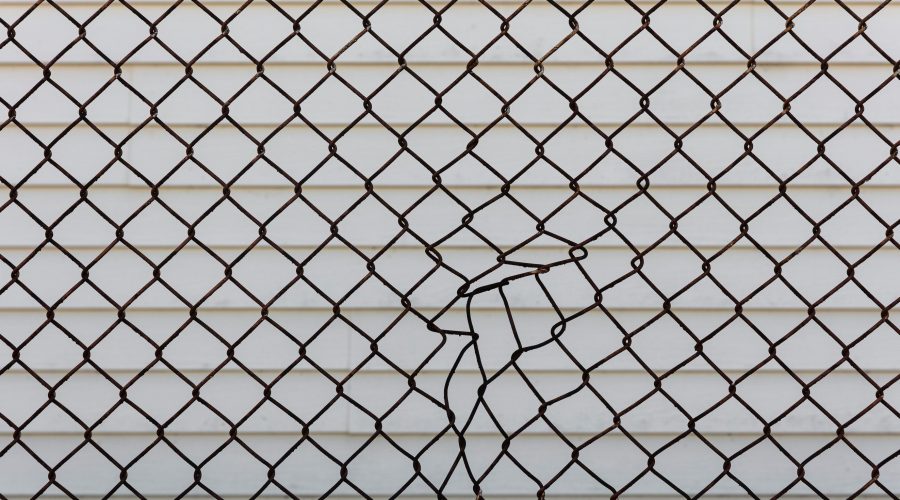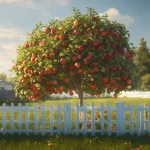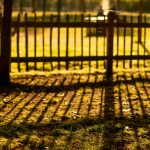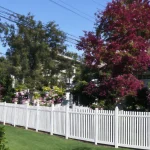How Long Does It Take to Put Up a Fence?
Are you thinking about putting a fence around your property? Perhaps such a fence would serve as an enhanced measure of security and privacy or simply serve to beautify your house. Whatever the case, erecting a fence means doing something big. It takes not just planning but a lot of patience as well in awaiting how long the whole process would take. Apart from all these things, during the preparation for this project, another concern is how to carry on with the installation with minimal hassle and inconvenience. After all, no one would like to have their yard turned into a construction site for much longer than necessary.
That’s why so many homeowners turn to professional fence installers for expert help to alleviate the stress involved in this task. A professional installer already knows about the best practices and trade tricks to make such a daunting and at times risky task becomes easy. But then how do you determine if you have what it takes to do the work yourself as opposed to hiring a professional? Most importantly, how long would it take to complete the job?
It depends on the type and condition of your ground, as well as your experience with how long it takes to install a fence. Some homeowners find it tempting to embark on a DIY infrastructure project. However, the two can quickly become overwhelming without the right tools, skills, or time. Instead, hiring a professional fence installation company not only saves time but does guarantees the job will be done correctly and efficiently.
In this article, you will know everything that you might expect and how to go about your fencing project with conviction. So, let us dive right into how stress-free and easy it can be for you to install a fence that suits you just fine and is within the timeline you have set.
Factors Affecting Fence Installation Time
1. Fence Type: A great factor that influences the amount of time needed for a fence installation is the type of fence to be constructed. Simple types of fences, such as chain link fences, are much faster to install than more elaborate wood privacy fences with detail work. The same goes with vinyl and aluminum ones, which come in prefabricated panels that can be assembled quickly.
2. Length of the Fence: Of course, the length of the fence also affects the time taken to put up the fence. A longer fence requires more posts and panels, as well as much more labor, extending the length of the job.
3. Ground Conditions: The state of the ground on which the fencing will be constructed can affect the timetable. If it is rocky or rough ground, additional preparation can involve leveling the ground or employing special tools to set the posts. Much easier, faster installation comes with flat, soft soil.
Average Time for Fence Installation
Usually, homeowners will spend a few days erecting the fence, from surveying and marking to digging post holes, setting posts, and attaching the panels, for a standard fence on fairly level ground. A professional crew should be able to do the same lengths of fencing in just one day, given good conditions.
The No-Mess, No-Dig Fence Installation Process
No Mess, No Dig Fence Installation Process is a revolutionary method that drastically reduces the time to install a fence. It eliminates digging, using a post-pounder that drives galvanized steel posts deep into the ground without creating a mess, creating a solid foundation. From that point, a vinyl, aluminum, or cedar post sleeve is attached to the steel post, rails, and panels easily attached to complete the structure.
Advantages of the No-Mess, No-Dig Process:
- Speed: No need to wait for concrete to set, making the process quicker.
- Cleanliness: Avoids creating piles of dirt or damaging your lawn.
- Durability: Posts are driven below the frost line, enhancing stability.
- Versatility: Can be used on challenging terrain, including rocky or frozen ground.
This new approach often allows the quick installation of an ordinary fence—about 200 linear feet—within one day.
Factors That May Extend Installation Time
The following are some of the conditions that contribute to extending the timeliness – even in times when modern techniques are made available:
- Complex Designs: The elaborate fence designs will require longer time for setup, due to their complex patterned gates, as they would take additional time to assemble and align.
- Permits and Approvals: Authorization from the local authority or homeowners association could delay the starting of the project.
- Weather Conditions: Heavy rain events, snow events, or extremely high temperatures can cause delays in installing the system.
- Property Size and Layout: Large properties or those with uneven terrain require more time and effort to navigate.
Preparing for Fence Installation
Proper preparation is crucial to ensure a smooth and efficient installation process. Before work begins:
- Acquire Permits: Gain the requisite clearances from your local government and homeowners association.
- Area to be Cleared: Remove hindrances, debris, or plants from the installation site.
- Mark Utilities: Locate any underground utility to prevent accidental damage during the installation process. Public lines are usually marked by the installer but homeowner private lines are concerned.
- Inform Neighbors: It is wise to notify the neighbors in advance about the project to manage expectations and address any potential concerns.
Post-Installation Tips
After your fence is successfully installed, a few steps can help maintain its condition:
- Apply Protective Treatments: For wooden fences, consider adding a sealant to prevent moisture damage and rot.
- Inspect Regularly: Look for signs of wear or damage and fix the issues immediately.
- Enjoy the Benefits: Take advantage of the increased privacy, security, and value in the appearance of your fence.
How We Can Help
Searching for a reliable company for the fairfield fence company? Best Gate and Fence is here to help you every step of the way. With more than 40 years of experience, we specialize in quality fencing solutions for houses and commercial properties. Our No-Mess, No-Dig Fence Installation Process is a quick, clean, and durable process for installing fences and typically completes most projects in a single day. Whether you are installing straightforward boundary fencing or a more complicated design, our expert craftsmanship and exceptional customer service will always exceed your expectations.
Get in touch with us today to start your fencing project and beautify your property with a strong and stunning fence customized to your specifications.
Post and Rail Fence Ideas
A post and rail fence can be a nostalgic element in your home and can serve a functional purpose for demarcating boundaries, safety, and aesthetics. Whether you are looking for a classical countryside feel or want an exciting modern twist, there are unlimited styles and materials for you to enjoy. Let us share with you some of the most wonderful ideas to create post and rail fences for making your outdoor space beautiful.
Planning Your Post and Rail Fence
Before designing any forms, it is important for you to prepare for the fencing installation. First and foremost, check the layout of the property and what you want it for; is the fencing literally because it has to be there, for aesthetic reasons, to keep nosy neighbors out during a party, or to contain an animal or livestock? Understanding the goals will lead to narrowing styles down and the best materials. Periodically source Zoning ordinances and codes to ensure that the fence you are planning adheres to heights and boundary specifications.
Choosing the Right Materials
Selecting the right material for your fence can have a huge influence on its durability, maintenance, and appearance. Here are common options:
- Wood: While giving a natural and rustic appearance, it definitely requires much maintenance in order to keep it from weathering and rot.
- Vinyl: A very durable and low-maintenance alternative that looks like wood.
- Metal: It is a very modern and secure option as a material that is good for use in the long term.
- Stone and Composite: Best for that high-end, elegant look combining strength and beauty.
Consider factors like climate, budget, and the fence’s primary function when choosing materials.
Classic Picket Fence
The white picket fence has been the American landscaping tradition. The arrangement of evenly spaced vertical slats creates a traditional, warm feeling in your yard; plant flower beds, or add climbing plants to integrate the charm of this old favorite into your yard. Ideal for front yards, it gives a lovely and nearly concealed boundary without completely leaving a view.
Split-Rail Fence
The split-rail fence is one perfect example of an excellent outdoor space. It is rustic yet functional and attractive at the same time. Normally made out of wood, this style has horizontal rails placed between sturdy posts. This is the ideal fence for farms, gardens, or properties wanting a more country look.
Woven Wood Fence
Woven fences really infuse that handcrafted feel into any garden. This fence is made by weaving flat slats and thin branches between vertical posts: pure, primal, and green; it is a perfect touch for creating those snug, cottage-style atmospheres.
Horizontal Slat Fence
If you want to achieve a modern touch, consider installing horizontal slat fencing. The fence has clear lines and offers a very smooth appearance without compromising on privacy. You can use wood alone, metal alone, or a mixture of both in a completely modern fence that goes well with an urban or minimalist setting.
Wood and Wire Fence
The practical and sensible mixing of wooden posts and wire panels is the best design option: it is perfect for the open spaces on a property or for keeping an animal away, while still allowing visibility. The wonderful merging of natural wood with industrial wire creates a real modern farmhouse feel in your yard.
X-Shaped Fence
This distinct type of split railing fence is an X-shaped fence and has crisscrossed rails between posts. Besides being visually attractive, it enhances the structure’s strength as well. It is a beautiful fence for homeowners who want to bring modernity to a rustic charm.
Trellis-Style Fence
It is best suited for gardens and yards as it incorporates latticework and therefore describes a trellis-style fence. It allows climbing plants to thrive in a light-weaving structure and offers a place for green, rich backdrops. Functionality harmonizes with the best elegant touch in this style.
Stone and Wood Combination
For a much sturdier and prettier appearance, combine stone posts with wooden rails. The combination gives an upscale look as well as durability. It is best suited to a larger property’s needs or a more stately-looking enclosure.
Metal Post and Rail Fence
Metal post and rail fences are modern and durable, being made up of steel or wrought iron posts with smooth metal rails for a simple yet stunning look. The style is best for properties emphasizing security and longevity.
Low Walls with Railings
The low stone or concrete boundary walls fitted with flat wooden or metallic rails denote a property line with understated elegance. This magnificent example of integrated design has the solidity of masonry and the freedom of railing. Truly functional yet beautifully effective.
Hog Wire Fence
Hog wire fences prove to be a wonderful low-cost yet fantastic fencing option. This fence design brings together wooden posts with metal grates to complete an open, seamless design perfect for gardens, backyards, and rural properties. This style can then be further accentuated with greens and flowers that grow through the grates.
Wavy Rail Fence
Wavy railings turned out to be whimsical artistic elements in the yard. The wavy-shaped rails tell a story of movement and lend that special character to the fence. Prop this up with bright-colored landscaping.
Vinyl Post and Rail Fence
They are cost-effective and versatile substitutes for wood, and pretty good to look at. Vinyl posts and rail fences come in a wide variety of colors and designs, enabling them to imitate a natural wooden-style effect but with all the advantages of being durable and easy to maintain.
Enhancing Your Fence Design
Adding personal touches to your fence can make it even more impactful. Consider these ideas to enhance your fence:
- Lighting: Install solar-powered lights along the posts to illuminate your yard at night.
- Planters: Attach small planters to the fence to grow flowers or herbs.
- Decorative Caps: Add ornate post caps for a touch of elegance.
- Paint or Stain: Use bold colors or natural stains to make your fence stand out.
Designing Your Perfect Fence
A post and rail fence is more than just a boundary; it’s a statement piece that enhances your property’s overall appeal. Whether you’re drawn to the rustic charm of a split-rail fence, the modern elegance of horizontal slats, or the durability of a wood-and-wire combo, there’s a design to suit every style and purpose. Consider your needs, budget, and landscape to select the perfect fence for your outdoor space. Ready to bring your vision to life? Explore fairfield fence company to help install the fence of your dreams and transform your yard into an inviting haven.
What Is A Fence Picket?
Fence Pickets have been a picture-perfect icon in fencing and intended as such for that innate functionality along with attractive appearance. If there is an intention to add a curb to an appealing property or perhaps build a productive border, then one must learn about its individual components, materials, installation options, and all the other technical matters. Fence pickets serve not just a purpose as a part of any fence but also play a very significant role in accentuating features of the home or a business.
This article will take a look through what precisely makes up a fence picket, the various types of materials, the popular designs, and some maintenance tips. At the end of this guide, you will be more than equipped to make the right choice about which fence picket suits you best.
What Is a Fence Picket?
A fence picket is a vertical board used in a decorative part of the fence. When spaced at regular intervals, such pickets combine to give the well-known look of a picket fence. They come in various styles of fencing but are most often used in traditional wooden fencing. Most typically, such pickets are short (3 to 4 feet) and arranged in such a manner that the open space provides circulation between and visibility through them.
It is built with a dual purpose, such as practicality and aesthetics. It is boundaries clear division between properties and enhances, when designed accordingly, the general appearance of a home or yard. Simplicity is what defines the beauty of fence pickets; timelessness, thus, makes them an obvious choice among homeowners who want a clean, welcoming yet functional fencing solution.
Key Components of a Fence Picket
Every fence picket structure, irrespective of the material or design, is composed of various important components. These components strengthen a fence and enhance its durability and functionality while taking care of the beauty aspect as well.
- Posts: The vertical supports anchored to the ground by which fence pickets are held. They give the structure and strength required to keep the fence upright and secure.
- Rails: These horizontal beams connect posts and provide the setting for the pickets. Generally, top, middle, and bottom rails support the fence construction to allow for maximum stability.
- Pickets: The most distinct feature of the fence is its vertical boards, which differ between the pickets. They can be spaced either closely together for anonymity or far apart for an unbarred look. Most homeowners choose to keep the spaces closed for more coverage.
- Post Caps: Protections against the weather have been incorporated in the form of added decoration at the top of the posts, giving them a complete look.
- Gates: A movable part of the fence that makes possible entrance. Gates come in varied styles-from a single gate to a double gate according to your needs.
Choosing the Right Material for Your Fence Picket
Wood can be the finest material but requires considerable maintenance to keep it from rotting and degrading due to rain and sun exposure. The best choices are cedar and redwood. Vinyl pickets cost almost nothing to maintain, do not fade or get destroyed by bugs, and never need paint, though wood is far superior in the natural look it offers. Composite materials consist of wood fibers, mixed with plastic, giving it the appearance of wood while using it less but charging more. Metal pickets are tough and act rustproof ideal for modern designs or ornamental designs but are not so customizable. Cellular PVC makes wood without wood drawbacks like required care and damage by rot and insects will easily show how long it lasts.
Popular Fence Picket Designs
When choosing certain designs of fence pickets, you can choose from a style that matches or complements well with your home or property. Many different designs are available, but some likely include classic and modern styles:
- Traditional Picket Design: It is a classic type of design, and evenly spaced vertical pickets create a well-defined but simple picture. It is very suitable for a traditional home or a house in a suburban area and it provides great charm as well as utility.
- Scalloped Picket Design: High above those pickets, their edges are curved, and so appear soft and graceful. The design is most suited for gardens and homes that reflect a colonial or rustic touch.
- Pointed Picket Design: This design has points at the top end of its pickets whereby it is made to look a bit more classy or formal. These pointed pickets tend to be common with colonial-style homes as well as other traditions of architecture.
- Lattice-Topped Fence: Adding a lattice top to your fence pickets can add an element of grace to the setting. This is the kind of design that is commonly used among gardens or sections of the house, for adding a certain ornamental detail.
- Stepped Picket Design: An ideal solution for homes that have sloping yards is a stepped design that has the pickets following the contour of the land to provide a consistent look no matter how uneven the terrain may be.
Installing a Fence Picket: DIY or Professional Installation?
Once you have decided what material and design style you will apply to your fence pickets, the next thing will be to install them. The installation can be attempted by you or done by a professional, depending on your skills and the complexity of the project.
DIY Installation: Installing fence pickets by oneself can be a valuable experience. It is entirely in control of the design and layout and can be set to perfection. However, this needs a significant amount of time, effort, and some skill. A DIY project may even be difficult to undertake if it involves working on either an unlevel ground or a very large area.
Professional Installation: The most suitable option is to employ a professional fencing contractor for more exact and easier installation. They have the tools and experience to make certain that the fence pickets are installed cogently irrespective of the kind of the land. Moreover, the professional installation also usually has warranty options for the clients’ awareness.
Maintenance Tips for Fence Pickets
An excellent method to extend the lifetime of your fence pickets is by maintaining proper care for them. Here are some maintenance tips for whichever material your fence pickets may be made:
Wood Fence Pickets: Wood requires constant maintenance so that it will not rot or fade. Periodic painting or staining on the wood would be needed after a number of years and continuous checks for any damage caused by pests or weather changes should be done. It also warps, hence proper sealing must be ensured.
Vinyl Fence Pickets: Cleaning vinyl fences is not a big deal, although periodic cleaning is essential. A mild soap solution mixed will a soft cloth or sponge should clean up the surfaces. Avoid harsh chemicals as these could do damage to the vinyl.
Composite Fence Pickets: Though they demand less maintenance, composite materials should still undergo occasional surface cleaning to avoid dirt buildup. Usually, mild detergent and water are adequate for cleaning.
Metal Fence Pickets: Metal fences are durable, but you should keep checking them for rust or corrosion. A powder-coated finish will help protect the metal from the elements, but if anything is found, see it at once.
Why Fence Pickets Are a Timeless Choice
Fencing pickets are a popular choice among homeowners due to the combination of function and beauty when installed in the home. These are perfect for boundary definition on the property, increasing privacy while keeping your yard looking great, or simply beautifying. Fence pickets also tend to be flexible enough to easily adapt to any kind of architectural style modern to traditional an ever-classic option for residential and commercial properties.
Choosing the proper fence picket, designing it for your needs, and maintaining it over time ensures that your fence will live on in beauty and function for years to come.
How Best Gate and Fence Can Help
At Best Gate and Fence, we consider ourselves the premier fencing company in West Caldwell, with over 40 years of industry experience. This includes both residential and commercial clients, and we take pride in providing the highest quality products and services in fencing. Our skilled craftspeople are committed to making sure that not only is your fence picket installation done correctly, but it’s also done with care.
Every step of the process is handled by fairfield fence company from consultation through to the completion of the job so that you can choose your perfect match of materials, design, and style best suited to your individual property needs. With exceptional customer service and a focus on quality, we can help you transform your outdoor space with a beautiful, functional fence picket.
How to Treat Wood Fences?
A wooden fence is not just a boundary around your property but a clear signature of style and functionality. Over time, however, it gets drenched in rain, sun-dried, and lived through by pests; it undergoes considerable depreciation both in terms of appearance as well as structural soundness. Without adequate treatment, even durable wood fences go the way of rot, warping, and discoloration.
Whether you’ve just built a new fence or want to renew an older one, it is good to learn about the best ways of taking care of them. From choosing an appropriate material to applying protective finishes, this guide will walk on the practical walks of care for wood fences. Strong and beautiful fences will come into the future.
Understanding Wood Fences and Their Challenges
Fences made of wood are generally erected from cedar, redwood, or. These woods needed to be used due to their natural inroads of decay and pests, but even the sturdiest types of wood will reach their vulnerability point sooner or later. Moisture, sunlight, insects, and all sorts of exposure, will cause warping, rot, and splitting. More often than not, treatments can be carried out to reduce or eliminate these factors and maximize the life expectancy of the fence.
Steps to Properly Treat a Wood Fence
1. Start With Quality Materials: When you are installing or replacing a wood fence, it is advisable to use durable pressure-treated wood for the posts. Pressure-treated wood contains injected chemical preservatives that make the wood resistant to moisture and insects. It is a very good choice for all portions of fence posts that are buried in the ground. For pickets and rails, the most commonly used types in the case of patio fencing are cedar and redwood as they are very naturally resistant.
2. Clean the Fence Regularly: Over time, dirt, mold, and mildew can build up on a fence, especially in damp or shady areas. Cleaning the wood gently with a detergent and water will help keep this from happening. For stubborn stains or growth, consider a power washer set at a low pressure to avoid damage to the wood.
3. Apply a Sealant or Stain: Staining or sealing a fence to provide the greatest form of protection against the elements. A water-repellent sealant will keep away moisture, which is the source of rot, and this will prolong the useful life of the wood. If you would like to accentuate the wood in its color or harmonize its look with the surroundings of your property, then apply an exterior stain that also has sealing characteristics. Better to be repeated every two to three years.
4. Keep Moisture at Bay: Moisture is one of the foremost causes of deterioration of the timber. Ensure that sprinklers are away from the fence and that growth, such as bushes or vines, does not touch its surface. Plants can keep moisture and promote decay. So prune them back regularly.
5. Inspect and Repair Damage Promptly: Regular inspections should be carried out for marked signs of damage like loose boards, cracks, or rots. It is also necessary to replace the damaged following maintaining the fence structurally. Keep screws or nails intact, so it is firmly restrained.
6. Protect Against Insects: Termites are some of the most dangerous insects that are naturally attracted to wood. This has made their treatment very necessary for the wood that is used for a fence by applying an insecticide preservative. While pressure-treated wood usually has this protection, untreated wood may need more.
7. Prepare for Seasonal Changes: Every season has different weather challenges. Winter can make wood swell and weaken due to heavy temperatures and snow and ice. Hot summer gives rise to prolonged sun exposure, resulting in dry crackling wood. You can stop this weather effect by applying some fresh stain or sealant treatment just before the beginning of each major season.
The Benefits of Regular Maintenance
Wooden fencing is an investment of time and effort for the future. A properly treated fence is not only more attractive but also has a much longer lifespan. Efficient care will lead to the absence of expensive repairs or replacements and, thus, enshrine this fencing as a permanent structure in your property for years to come. Maintaining a wooden fence would require cleaning, sealing, and repairing but, ultimately, it is worth all these efforts. An aesthetically pleasing, well-maintained wooden fence becomes an excellent decor for the property and improves privacy and security for the long term.
Following these steps and being proactive in maintenance will keep your wooden fence in an excellent state for usage for many years to come. At Fairfield Fence Company we don’t only think outside the box; we redefine it completely. Every project is yet another opportunity for us to showcase the proficiency and ingenuity that defines every fence we install as a lifelong monument to quality and craftsmanship. Let us help you realize that vision while preventing your investment with quality conscientiousness and unmatched dedication.
How Wide Should a Gate Be?
When it comes to planning your outdoor space, gates would not really be considered an afterthought and, rather importantly, form the primary feature that ties everything. Gates also connect the entryway to your property effectively clashing aesthetics with functionality while leaving an impression on guests and neighbors alike. It may either be a lovely garden gate for enhancing a path or a driveway gate welcoming vehicles to your property. Gates come in different styles, materials, and sizes to meet various needs.
The width at which your gate is set plays a crucial role in decision-making besides mere appearance should provide access, security, and usability. The gate must work seamlessly for many years to come. In this blog, you can find how to determine the best gate width for your application and read helpful tips for making an intelligent decision regarding it.
Why Gate Width Matters
A gate width extremely determines its usefulness and purpose. Landscaping may beautify with an attractive gate, but functionality determines its worth. It might just secure a backyard, its access might just be a garage opening, or it might just simply place a limit to an entire garden, but a width must ensure its practicality and smooth movement. Too narrow, and it becomes an everyday bother. Too wide, though, may even seem unnecessary or just get in the way.
By understanding the intended use of your gate, you’ll be better equipped to select a width that complements your property and meets your specific needs.
Determining the Purpose of Your Gate
To be able to choose the right width for your gate, first, you need to determine the use you want for it. Here are popular common uses:
Pedestrian Access
Small widths are typically adequate for gates designed to let a person through. Such gates may have a width of three to four feet for good use, allowing ample space for walking but keeping it compact.
Driveway Access
If a gate is to give access to a drive, it must also be wide enough to drive most vehicles through it. On average, these gates measure about 10 to 12 feet in width to suffice for all normal-sized vehicles: trucks, SUVs, and, of course, cars.
Garden or Utility Access
Gates for gardens or practical areas usually need broad openings to allow passage for items such as wheelbarrows, lawnmowers, or other gardening instruments. Five or six feet is usually the appropriate width for these applications.
Specialized Use
For those properties that require something special in terms of access, such as farming equipment, trailers, or even golf carts, a large gate may be in order. Gates of 12 feet or wider will serve the needs without cumbersomeness.
How to Measure for the Perfect Gate
Connecting the exact measure is key before one selects a gate. He should first measure the breadth and height of the gate opening. Here’s a collection of the points that you would characterize in measuring:
- Measure the Opening: Measure the distance between the two ending points where the gate will be fixed. This distance should be exclusive of uneven surfaces and other interruptions such as columns that could interfere with the closed position of the gate.
- Account for Clearance: Provide enough clearance for the gate to swing open freely without colliding with the surrounding structure, such as a wall or plant.
- Factor in Variations: Measure at multiple points along the opening to account for inconsistencies in width or height.
By taking these steps, you can ensure a snug and secure fit for your gate.
Standard Gate Sizes
While custom gates can be made to any specification, there are standard sizes that suit most needs:
- 3 Feet Wide: This is standard narrow for pedestrian traffic and works great with small garden gates or side yard entrances.
- 4 Feet Wide: A fairly standard residential gate width. This width accommodates pedestrian movement plus a bit of equipment, like a push mower.
- 5-6 Feet Wide: Great for riding lawnmowers or for producing a grand entrance to the garden or utility area.
- 10 Feet Wide: Practical choice for driveway gates, allowing most standard vehicles to pass through easily.
- 12 Feet Wide: Recommended for properties requiring access for larger vehicles or trailers, providing plenty of space for smooth entry and exit.
Design Considerations for Gate Width
While functional capability should not compromise the other- a wide gate makes a grand statement, particularly at the entrance to a driveway or garden, whereas a narrow one can convey intimacy to a small space.
Besides, the consideration of the material and style for the gate may involve heavier materials such as wrought iron or solid wood to be supported by stronger structures that would determine their design. Likewise, gates with very complicated patterns or details would need to keep a balanced width against visual proportions.
Weather and Terrain Considerations
The climate and terrain where your gate is installed also play a role in determining its width. For example:
- Sloped Ground: A gate installed on sloped terrain may need some additional clearance for opening and closing properly.
- Windy Areas: Wider gates are extremely affected by the force of wind, so they should be reinforced by posts or hinges to remain stable.
- Snow or Debris: Adequate clearance should be provided at the bottom of the gate to avoid any obstruction from heavy snow or debris accumulation in areas prone to such buildups.
Custom vs. Prefabricated Gates
A custom-made gate might be worth looking into should your specifications fall outside the norm for standard sizes. Custom gates may be straightened according to individual dimensions, recognize particular necessities, or meld with an already established fence type. Typically, those gates will have a higher price tag compared to the prefabricated ones.
Ready-made gates are available in standard sizes and are commonly found for most fence design applications. Budget constraints can therefore be easily overcome.
Your Trusted Partner in Fence and Gate Solutions
At fairfield fence company we understand that every property is unique, and so are its requirements; we are willing to help you find the most suitable gate for your house or commercial property. Be it a charming garden gate, a secure driveway entrance, or a custom design, our expertise, quality materials, and professional installation services would do you good.
Our team is really taking precautions to make sure that your gate enhances the functionality and beauty of your estate. We are there with you from measuring right up to selecting the suitable size, through choosing the proper material and style. Call us today to learn about our extensive range of gates and how we can help realize your dream!
What is Vinyl Fencing?
Fences are more than boundary; they are reasonably beautiful, private, and secure. Among various fencing options available, vinyl fences are becoming increasingly popular because of their durability and low maintenance aspects. But what makes these vinyl fences different from the others, and why are many homeowners considering them as their fence choice?
Unlike timeless traditional wooden or metal fences that require regular care, this kind of fencing constitutes a modern alternative requiring no effort. It can withstand harsh weather conditions, resistant utopists, and will still look good for many years, making it a suitable option for those looking for common features with functionality and fashion. Whether elevating your property’s curb appeal or ensuring high-end long-lasting protection, it offers the best.
In this post, we will discuss everything about the nitty gritty surrounding vinyl fencing, from its make-up through to its incredible benefits, as well as styles, and the reason why it is the best choice for people looking for practicality plus aesthetics.
What is Vinyl Fencing?
Vinyl fencing is made of polyvinyl chloride (PVC). This is a very strong and flexible synthetic material. PVC is formed from a combination of ethylene (from crude oil) and chlorine, resulting in a long-lasting and weatherproof substance. PVC is extensively used in construction and plumbing and is often termed “infrastructure plastic” because of its great diversity in various building projects.
When one uses it in fencing, it turns into an alternative to plastic on traditional materials like wood or metal. Unlike wood, which tends to decay, and unlike metal, which may rust with time, this one offers a much more durable and virtually maintenance-free solution for decades.
Why Choose Vinyl Fencing?
Vinyl fencing is not just about practicality; it is about transformation. This is why it is becoming the most preferred fencing option for many:
1. Superior Durability: Vinyl barriers are built to withstand extreme conditions. They withstand cracking, warping, and splitting such that they last long in areas with severe weather. It is stronger than wood and acts as a strong barrier that can resist impacts without sustaining damage.
2. Weather Resistance: Vinyl fences are highly resistant to the forces of nature. They will not rot, rust, or be damaged by moisture. Also, their UV resistance assures that their colors remain vibrant even after years of sun exposure and do not fade.
3. Low Maintenance: One of vinyl’s most significant advantages is its ease of upkeep. Unlike wood fences that require regular painting or staining, vinyl fences only need an occasional rinse with soap and water to maintain their appearance.
4. Cost-Effectiveness Over Time: While initially, vinyl fencing may appear costly when compared to some other materials, its long life span and minimal maintenance make it the most economical in the long run.
5. Flexibility and Safety: Vinyl can bend under pressure without breaking. It is one of the best products for places where strong winds make it impossible to stay outside during heavy hail or snowfall. This property also keeps it from being seriously injurious, because it seldom splinters.
6. Versatile Design Options: Vinyl fencing offers a wide range of styles, heights, and colors to suit any aesthetic preference. Whether you’re seeking a rustic split-rail fence for a countryside home or a sleek solid-panel fence for a modern property, vinyl has options to match every vision.
7. Environmentally Friendly: Vinyl is one of the most energy-efficient and low-emission materials used in manufacturing. It does not require any chemical treatments against pests and rot and is highly therefore eco-friendly.
8. Pest Resistance: Unlike wood, which termites and other pests can slowly destroy, vinyl is impervious to insect invasions. This ensures that your fence would remain intact benefits of not requiring pest control.
9. Longevity: Vinyl fences boast decades of use with almost no signs of deterioration. While wood needs to be either replaced or repaired every few years, vinyl does not structurally and aesthetically deteriorate over time.
Types of Vinyl Fencing
Vinyl fencing comes in various styles, making it suitable for a variety of needs and preferences:
- Two-Rail and Three-Rail Fences: These classic designs are simple yet elegant, featuring horizontal rails.
- Split-Rail Fences: Perfect for a rustic aesthetic, these fences use rounded or square rails for a countryside charm.
- Solid Panels: A sleek, modern option that provides complete privacy.
- Board and Batten: A decorative design combining solid panels and vertical battens for added visual interest.
- Horizontal Fencing: A contemporary style with horizontal panels that stack seamlessly.
Each one has its unique advantages from privacy and security to something aesthetically pleasing and pretty much everyone has a new fencing that serves whatever need.
The Installation Process
One of the significant advantages of a vinyl fence is that it is easy to install. These fences are built with interlocking panels or may even be pre-assembled sections, which makes it so quick and easy to install these fences. Most installations are done in as short as two or three days.
Installation with lightweight vinyl is very easy to handle and reduces labor and time costs. Premises, in fact, recommend professional installations for the best results, but are manageable for the experienced DIY type with the right tools and some guidance.
Debunking Myths About Vinyl Fencing
Although becoming increasingly popular, vinyl fencing is widely shrouded in myths. It is said to look artificial, but that is not true. Nowadays, modern vinyl fences will have imitations and fine color textures to match the appearance of wood or stone, as per authentic and aesthetic characteristics. Another myth they think is the weakness of the vinyl for security; however, it is nearly five times stronger than wood and able to withstand heavy impacts most reliable option to safeguard your property.
It has no environmental impact at all. Although it is not made of synthetic, vinyl tops it in durability and maintenance. As a result, one can easily see that with all that has to go into caring for and replacing wood when needed, this makes vinyl much more sustainable as opposed to having frequent replacements and a lot of chemical treatments for wood. This is what practical, really beautiful, eco-friendly, and of modern needs in fencing means.
How We Can Help
At Best Gate & Fence, we don’t even think outside the box. We’re redefining the box itself. Whether you want to increase your curb appeal, secure your property, or create a calming personal retreat, we design and craft the fairfield fence company built right into your life. We take pride in fine craftsmanship and experience to give you well-thought-out, practical long-standing, and established fencing installations.
With every project, we believe our customers deserve more than functional installations, and with every new vinyl fence, we assure you such a breathtaking addition to your entire property. Let your home enjoy maximum transformation by installing a stylish, durable, and functional vinyl fence with us. Reach out to us today to start your fencing journey!
How do you build a post and rail fence with wire?
A post-and-rail fence with wire is a practical and beautiful option for many property owners. It soon becomes a real beauty with rustic charm and modern utility elements, making it excellent for rural properties, gardens, and even business applications. Simply put, post and rail fencing consists of vertical posts and horizontal rails, but with wire added to enhance the security and containment capabilities. The combination is perfect for fencing livestock or putting boundaries for gardens, all while still affording an open and inviting air.
In this guide, you will learn how to construct an attractive, yet long-lasting, post and rail fence with wire. You will understand the components of the fence and, in time, will be shown step-by-step how to install it so can construct the fence.
What Is a Post and Rail Fence?
Post and rail fences are considered the ultimate in traditional fencing. Such simplicity and versatility put their use into a class on their own. Made up of upright posts spaced evenly and horizontal rails connecting them, this fence style offers endless possibilities. You can build it easily with various types of material including timber, metal, or composite, all according to your needs.
Adding wire to such a beautiful classical design promotes its functionality. It acts as a barrier for the smaller animals but simultaneously props up the structure for larger animals or more security reasons. This is ideal for agricultural purposes as it encompasses the aspects of durability and containment.
Different Ways to Build a Post and Rail Fence
Post and rail fences are highly variable using different methods for construction for different purposes. The most popular methods are:
- Mortised Post and Rail Fencing: The horizontal rails sit snugly into mortises cut into their posts. This provides a clean and seamless look while eliminating the need for fasteners.
- Notched Rail Fencing: The rails are notched and attached to the posts using brackets or screws. This style is simpler to assemble but remains sturdy and reliable.
- Wire-Enhanced Fencing: Wiring the fence tremendously increases its utility. A few examples of wire options include welded wire, woven wire, or chain-link, and they can be used along with the rails to give a firm barrier appropriate for a variety of needs, including confining livestock or protecting gardens.
Proper planning, appropriate and adequate materials, and careful execution are the backbone of every successful post and rail fence, and for that matter, any method.
How to Build a Post and Rail Fence with Wire
Building a post and rail fence with wire involves several steps, from planning to installation. Let’s break it down:
Step 1: Planning and Preparation
Create an outline for your fence. Pinpoint the area to measure to determine how long fence you need-how many posts and rails. Mark space for corner posts, end posts, and gateway dots. Think about the purpose for which you will want the fence. Are you going to keep livestock or protect a garden? Or simply use wood to give boundary lines? This will define the materials and spacings you will be considering. Smaller animals should also get tighter rail spacings and stronger wire for containment purposes.
Step 2: Gathering Materials and Tools
You’ll need the following:
- Materials: Fence posts, rails, wire mesh or welded wire, concrete mix, screws, or nails.
- Tools: Post-hole digger, hammer, level, measuring tape, wire cutters, and a circular saw.
For the best durability, you may choose to consider decay-resistant materials like pressure-treated wood or metal for your fence.
Step 3: Setting the Posts
Use a post-hole digger to dig holes at each marked location. A minimum depth of one-third of the height on the post above ground is essential for good stability. Add a layer of gravel at the base for drainage before installing the post. Run concrete into the hole with the post plumb and level. Weeks Hard should be given concrete at least one day to two days before adding rails and wire.
Step 4: Attaching the Rails
We can fix the horizontal rails on posts either by screws or nails. The rails should be mounted inside the fence for more significant strength against pressure from outside. We shall not use joints along the length of rails so that the joints can be staggered out on the width direction to give a uniform and stronger construction.
Step 5: Adding the Wire
Unroll the rolled wire mesh along the length of the fence and cut it to size. It shall be attached starting from one end through the posts and rails with the use of staples and fasteners. Ensure the tautness of the wire to prevent sagging. Overlapping slightly at sections to continue the barrier. Stack wires for higher fences.
Step 6: Final Adjustments
The fence should be closely surveyed for weak spots and areas where reinforcement may be necessary. Weed out excess wire and check that all fasteners are tight. If you wish, you can apply a wood preservative or paint that will add to the quality of the fence design and its longevity.
Tips for Success
- Select the Ideal Wire: Whether it’s welded wire for a neat appearance according to needs or woven wire to gain greater flexibility.
- Maintain Levelness: Use a string line and level to make sure that the fence line is straight and uniform.
- Consider the Terrain: Raise poles and rails accordingly to allow adjustment for slants or uneven ground.
Why Choose a Post and Rail Fence with Wire?
This classical fencing style serves as an ancient yet modern touch. It could be used for multiple purposes ranging from enclosing livestock to adding curb appeal. Customization makes the design adaptable to individual properties. Erecting a fence using posts and rails with wire is a rewarding exercise that adds charm and utility to your property. With proper planning, the right materials, and attention to detail, your fence will serve its purpose beautifully for years to come.
This fencing is adaptable and durable, whether to locate property boundaries, deter livestock, or beautify your landscape. Following these guidelines will result in an effective but personal creation. At Best Gate and Fence, we manufacture fabulous fencing solutions that fit your needs. As a leading fairfield fence company we are available for work with quality materials, expert advice, and professional service to help you in your fencing projects. Contact us today and let us bring your vision to life!
How Often Should I Stain My Fence?
A wooden fence does provide us with security, but it will also serve the purpose of making our property look good besides guaranteeing privacy and safety. So, it is essential to maintain it regularly to keep the look and performance intact, more importantly staining. Generally, staining not only makes the beauty work of the fence but also prevents more deterioration from environmental effects. If you are wondering how often you should stain your fence, this guide presents the details that will help you make wise decisions, about maintaining a fence in its best condition.
Why Staining Is Essential for Wood Fences
It is true that wood fences are always exposed to nature, intensively with the effect of sun, rain, temperature, and at times snow or hail. Most of these conditions make a woodland fence tend to fade, crack, warp, or decompose over time. Staining acts as a shield in protecting the wooden structure while beautifying it.
In contrast to paint, which forms film on surfaces, stain goes deep into the wood for superior protection against UV rays, moisture absorption, and the establishment of mold/mildew. A well-stained fence also does not hide the inherent beauty of the wood but rather enhances the overall appeal of your property.
General Recommendation: Every 2 to 3 Years
Every two or three years is a good general rule to follow regarding the staining of your fencing. However, this timeline can shift with other prevailing factors:
- Sun Exposure: Fences exposed to intense sunlight, especially south-facing ones, can fade and dry out more quickly, requiring more frequent staining.
- Climate Conditions: In moist or rainy climates, maintenance may become more frequent due to the conditions fostering mold and mildew. Dry environments, on the other hand, may display the first signs of cracking or splitting, which will also require timely intervention.
- Type of Wood: Pine and other softwoods need to be stained far more frequently than hardwoods such as oak. Cedar and other rot-resistant woods may go longer between treatments, but they still need to be looked after at intervals.
- Signs of Wear: If your fence appears dull, discolored, or rough, or if water no longer beads on the surface, it’s time for a fresh coat of stain.
The Importance of Timing for New Fences
Plan your time to be able to stain your new fence. You have to wait long enough to allow the treatment to dry completely, or else the moisture may prevent the stain from penetrating. Here is the waiting time with a different type of wood:
- Kiln-Dried Lumber: One to two months are needed for this kind of wood to settle and dry after installation.
- Treated Lumber: Requires a drying period of around six months for the moisture and chemical content in the wood to dry before any staining.
- Green Lumber: Green lumber takes about a year of drying per inch of thickness to fully cure and dry.
A small test with water gives you a good idea about readiness: splash some water on the wood surface. If the droplets bead up then the wood is still too wet. On the other hand, if it absorbs into the wood, then it is ready to take stain.
Factors That Affect the Staining Interval
While the general rule is to stain every two to three years, several factors might shorten or extend this timeline:
- Weather Conditions: Prolonged exposure to rain, snow, or harsh sunlight accelerates wear and tear.
- Quality of Stain Used: High-quality stains are better for strength and endurance. Oil-based stains are usually stronger than water-based stains.
- Fence Maintenance: Regular cleaning, repairs, and inspections can help prolong the time between staining.
- Type of Finish: Transparent stains typically require more reapplication than semi-transparent or solid stains since they offer less UV protection.
Preparing Your Fence for Staining
The most important task for a smooth and lasting finish while staining the fence is preparation. Start cleaning the surface to get rid of dirt, grime, mold, and mildew, a wood cleaner or a mild detergent will be fantastic for that purpose. Power washing is sometimes needed for cleaning the base on older fences.
Next, inspect the fence for any damage. Replace or repair any rotting or broken boards. Secure all loose nails or screws to build a stable structure for even stain application. Sand the surface to smooth out rough areas; this will also open the wood grain and allow the stain to penetrate better. Finally, make sure that all wood is completely dry after cleaning or sanding: allowing proper drying time is crucial for stain adherence and performance.
Applying the Stain
Staining should also be done during the right weather conditions cloudy, dry day would be best so that the stain application will not be fastened due to direct sunlight. Use a good brush, roller, or sprayer to make sure that the stain is applied evenly and smoothly. Thin, uniform layers should be applied to prevent dripping and unevenness, paying special attention to edges, corners, and difficult-to-reach areas, to ensure every part of the fence is well covered with the stain. Moreover, if additional coats are required, each layer should dry completely before the next application to get the best from the finish and a perfect result.
Additional Tips for Fence Care
Beyond staining, proper maintenance can significantly extend the life of your fence:
- Inspection Routine: Look out for indications of rotting, warping, or looseness of boards and mend the same issue without further ado.
- Clean Up Regularly: Ensure the fence remains cleaned from debris, mold, or mildew, which can cling to it.
- Prune Surrounding Vegetation: Trying to avoid any moisture retention and probably pest infestation, bushes, grass, and vines should not meet the fence.
- Seal the Bottom of the Fence: Moisture is kept at bay by keeping the base elevated from prolonged contact or by using a protective sealant.
Why Stain Instead of Paint?
The paint gives a more brilliant look but tends to flake, and blister, and needs more frequent application than the other option. On the contrary, stain penetrates the wood, giving it a more natural appearance and providing deeper protection. It does not peel or crack, making it easier to maintain and less time-consuming.
How Best Gate & Fence Can Help
At Best Gate & Fence, we understand your fence is an essential part of your home, both in terms of appeal and functionality. Our staff specializes in all kinds of fence installation, staining, and upkeep, ensuring your investment remains for many years to come. If you are planning a fairfield fence company or renovate your existing one, we assure you of receiving help from professional consultants and experienced service deliverers regarding the fencing project. Here, you will get highly skilled services that assure you an enduringly beautiful, robust, and perennial feature of your property.
By following these guidelines and informing regular maintenance as a part of your routine, the lifespan of your fence may be extended, and it will continuously have its best look every month of the year. A well-maintained fence is an investment into the beauty of the property, deriving its privacy and value the most out of it.
How to Build a Hog Wire Fence?
Hog wire fencing has become a major change in people’s gardens around cities, which used to be one architectural unit on farms that were meant for their livestock. Several advantages of these fences are that they are flexible, very cheap, and good-looking. These have made them all the rage among homeowners, who want to take a natural alternative instead of conventional chain link or wooden fencing. Perhaps you’re making a pen around the garden, or you would want a trellis, or you want to build a boundary that will be sturdy. Putting up a hog wire fence would be a great DIY project. This is because the entire thing of constructing the hog wire fence from start to finish answers all that you might want to know.
What is a Hog Wire Fence?
A hog wire fence is a hybrid between classic farm fencing and modern style. Hog wire fencing consists of wood posts and rails joined together with galvanized wire mesh to form rectangular or square grids. The wire mesh has some corrosion-resistant treatment to ensure its long-lasting durability. Unlike chain link fences that have metallic poles, the hog wire brings that rustic feel into your home; hence it gives the most suitable effect either in urban or suburban settings. Functional yet very pleasing to the eye, this type of fence is great for front or backyards, vegetable gardens, or even decorative trellises, serving as a containment wall for pets or small children while allowing a view through it.
Materials and Dimensions
Hog wire fences are customizable, giving you control over their size and style. The fence typically consists of:
- Fence Posts: Treated 4” x 4” wooden posts, usually cut from 10’ lengths.
- Horizontal Rails: Treated 2” x 4” lumber for top and bottom rails.
- Wire Panels: Galvanized hog wire mesh, available in various sizes.
You know, the most common design is 5 by 5 panels holding two posts which will be spaced evenly across the run of the fence. Your specific needs and the lay of your property will determine the actual dimensions. For various options of both mesh panels and treated lumber, visit any of the local hardware stores such as Home Depot, Lowe’s, or Tractor Supply.
Step-by-Step Guide to Building a Hog Wire Fence
Step 1: Plan and Measure
The first step of this whole enterprise is the utter preparation of the hog wire fence itself. It starts with the layout and marking boundary lines for your fence. This may be especially significant in cases in which it borders a neighbor’s property or public ground. Measure and mark specific points where the fence posts will be put, spacing them out evenly. Don’t forget to check for underground utility lines as well. They should have already been contacted by your local utility services for locating and marking.
Step 2: Install Corner and End Posts
The corner and end posts are the foundation of your fence and must hence be installed securely. Dig 14 to 18 inches deep post holes. Add a few inches of gravel in the base of each hole for drainage and to protect against possible rotting. Pour the gravel into the hole, position the post, and check it with a level to ensure plumb. After it is aligned, pour concrete around the base to secure it. Allow time for the concrete to set, and then move on to the intermediate posts, using the same process to maintain uniformity of support.
Step 3: Attach Horizontal Rails
Now that the posts have been established, we should include horizontal rails. It consists of putting a 2″ x 4″ lumber on top of the installed posts, making the required cuts, and securing it using screws to have it be the upper rail. For the bottom rail, lumber is cut to size in-between pairs of posts and secured with an angle at the ends of the pilot holes and screws. When it comes to connecting a rail, make sure that the joint is positioned on top of a post to achieve great stability. These rails will act as a framework for attaching the wire panels.
Step 4: Install Hog Wire Panels
Connecting the hog wire panels is probably the simplest part of the process. Hold the mesh against the posts and rails of the fence so that it is aligned and taut. Depending on your design preference, you can either run the whole mesh as a continuous roll along the fence or cut it into separate sections for each panel. Use heavy-duty staples or fencing nails to fasten the mesh securely to the posts and rails. Check the alignment from time to time so as not to create a lopsided appearance.
Step 5: Add a Gate (Optional)
At this moment, you are on schedule to erect a fence gate if it is needed after the fencing project. Posts will have to be more strongly anchored because of the weight of a gate. It is best to obtain a gate kit complete with an entire frame, wire mesh, and all hardware required. Drilling pilot holes in the hinge and latch, the gate can now be fixed to the posts. Finally, check that the gate opens freely and that it is level before proceeding.
Step 6: Final Inspection and Maintenance
After installing the posts, rails, wire panels, and gate, inspect them carefully. Inspect for stability—ensure the posts are firmly set, and the rails and wire mesh are securely attached. Tighten loose screws or staples. Apply a protective coating to the wooden parts to make them last longer, especially in harsh weather conditions. Regular maintenance, such as cleaning the mesh and the treatment of the wood will make your fence look very great for years.
Although a hog wire fence is a feasible DIY, but it does require much time, labor, and proper tools. If you feel like spending money on a professional, fairfield fence company is available for your needs. Our experienced team specializes in building top-of-line fences customized to your needs. Whether you need a backyard boundary, a garden enclosure, or an appropriate decorative trellis, we will install your hog wire fence for you. Reach us today and tell us how to make your vision a reality!
How Tall Are Chain Link Fences?
A fence has always been a wall between safety and private life. They used to be the simplest form of barriers but have gradually evolved into the most artistic and elaborate form of enclosures which serve not only practical purposes but also aesthetics. In current times, a fence cannot be understood in isolation as the only line demarcating property territory, but it adds great value to a home by increasing its curb appeal, ensuring safety, and shielding what is worthy of onlookers.
Chain link fences have many faces as they are versatile and economical. These fences serve a wide range of applications in residential, commercial, or industrial use. One key consideration in installing chain link fencing is the height. Ideally, you would want to take into account how high the fence will be in terms of function, appearance, and adherence to local regulations. Let us gain insights into these things and help you make your own choice.
Standard Heights for Chain Link Fences
Chain link fences are available at various heights, making them suitable for a variety of applications. Here are the common sizes and their general applications:
3 to 4 Feet
This height is used mainly in boundary demarcation and decorative work. A 3- or 4-foot high chain link fence is recommended for front feeding yards, gardens, or places where the hope is of visibility but at the same time a certain amount of enclosure.
5 to 6 Feet
This is the most popular height for residential backyards. A 5-to-6-foot chain link fence has the right balance of privacy and security for keeping children and pets safeguarded and keeping intruders at bay.
7 to 8 Feet
In terms of size, these fences can be often seen in commercial and industrial spaces and sometimes even for heightened security in residential areas where extra protection is desired, without making it too intimidating.
10 to 12 Feet and Above
Taller chain link fences generally with a height of 10 feet or more are designed for use like securing sports facilities, industrial sites, and high-security areas and often feature barbed wire or privacy slats to enhance their security appearance.
Choosing the Right Height for Your Needs
To ensure that the chain link fence will work well for you, it is important to understand a few purchasing factors before choosing its height.
Purpose and Functionality
When it comes to choosing a fence, there is a primary purpose, and the height is determined by that. For instance, if you are trying to keep small pets within the premises, a fence about 4 feet tall should do. But if you will be using it against trespassing or to create a private space, then a fence that stands about 6 feet or higher would be perfect.
Local Regulations and HOA Guidelines
Before finalizing your decision, ensure the local zoning laws and Homeowners Association (HOA) guidelines in your area check first. Many local governments set certain restrictions- even heights of fences, especially in front yards. Very important so you will not incur fines or argue with anyone.
Aesthetic Considerations
Besides the functionality of your fence, it has to seamlessly mesh with the overall aesthetic of your property. While a chain-link fence of any height may look very out of place in a cul-de-sac suburb or taller, a shorter fence may blend in nicely with the boundary freeing up the house with its surroundings.
Budget Constraints
The material and installation costs associated with the construction of a fence rise according to the height of the fence. More material, labor, and different types of reinforcements are required when constructing fences to be taller. To find a height that suits both your requirements and budget, balance what your budget will afford with what you need.
Pet and Child Safety
When you have animals and kids, they come first. For little pets, a 4-foot fence should suffice, but bigger dogs can jump over it. Likewise, keep the kids safe while having fun outdoors with taller fences.
Neighborhood Trends
Your fence must match all those in the area where you live. A fence different in height would either make your property stand out for the wrong reasons or even lower its resale value.
The Benefits of Different Chain Link Fence Heights
Chain link fences offer unique advantages at various heights.
- Short Fences (3–4 Feet): These fences are perfect for decorative purposes, offering an unobtrusive way to define property boundaries. They’re commonly seen in front yards and gardens, where visibility and aesthetics are a priority.
- Medium Fences (5–6 Feet): Ideal for residential backyards, these fences provide adequate privacy and security while maintaining a balanced appearance. They’re great for containing pets and children without obstructing the view entirely.
- Tall Fences (7–12+ Feet): These are the go-to choice for high-security needs. Whether it’s for a warehouse, a sports complex, or an industrial site, tall fences provide maximum protection and can be customized with additional features like barbed wire for enhanced security.
Factors That Influence Fence Height Decisions
There are many reasons for a certain height of the chain link fence which include functionality and practical factors as basic factors. Most requirements arise from security needs because taller fences give out better security, especially for heights exceeding 7 feet. Commercial and industrial purposes certainly opt-in as a factor because these fences must be durable and strong. More often than not, privacy also plays a role. The design of chain link fences would be open but privacy slats do tend to offer a certain level of seclusion. That would, again, seem a feature of taller in-home fencing since neighbors are always close by.
Visibility, in most cases, supersedes privacy. For example, parks or public spaces often require lower fences as they maintain visibility during defining spaces. Coming to the environmental factors, as indicated by the uneven land, it may require height adjustment to maintain an aesthetic uniform outlook of the fence. Likewise, in areas subjected to strong winds, it has been found that such reserves need shorter or reinforced fences to eliminate suspicion of structural failure. Evaluating all these factors, one can choose the most favorable height of the fence that would fulfill his or her requirements in terms of durability, functionality, and aesthetics.
How We Can Help
Chain link fencing installation in NJ specializes in helping homeowners find and put up chain link fences according to their personal needs and in-depth specifications. Whether it is for a 3-foot decorative fence around your garden or a high-security 12-foot barrier fencing around your site, we have it for you. Our tailored services will make sure that not only is the fence functional for meeting all your needs but also improving the general look of your property.
You don’t only invest in a fence when you work with us; you invest in peace of mind. With our materials and installation processes, there will be years of durability, reliability, and satisfaction. Call us today about your fencing needs and learn why fairfield fence company is the trusted name in chain link fence solutions. Together, we’ll design the boundary that protects and elevates your property.
